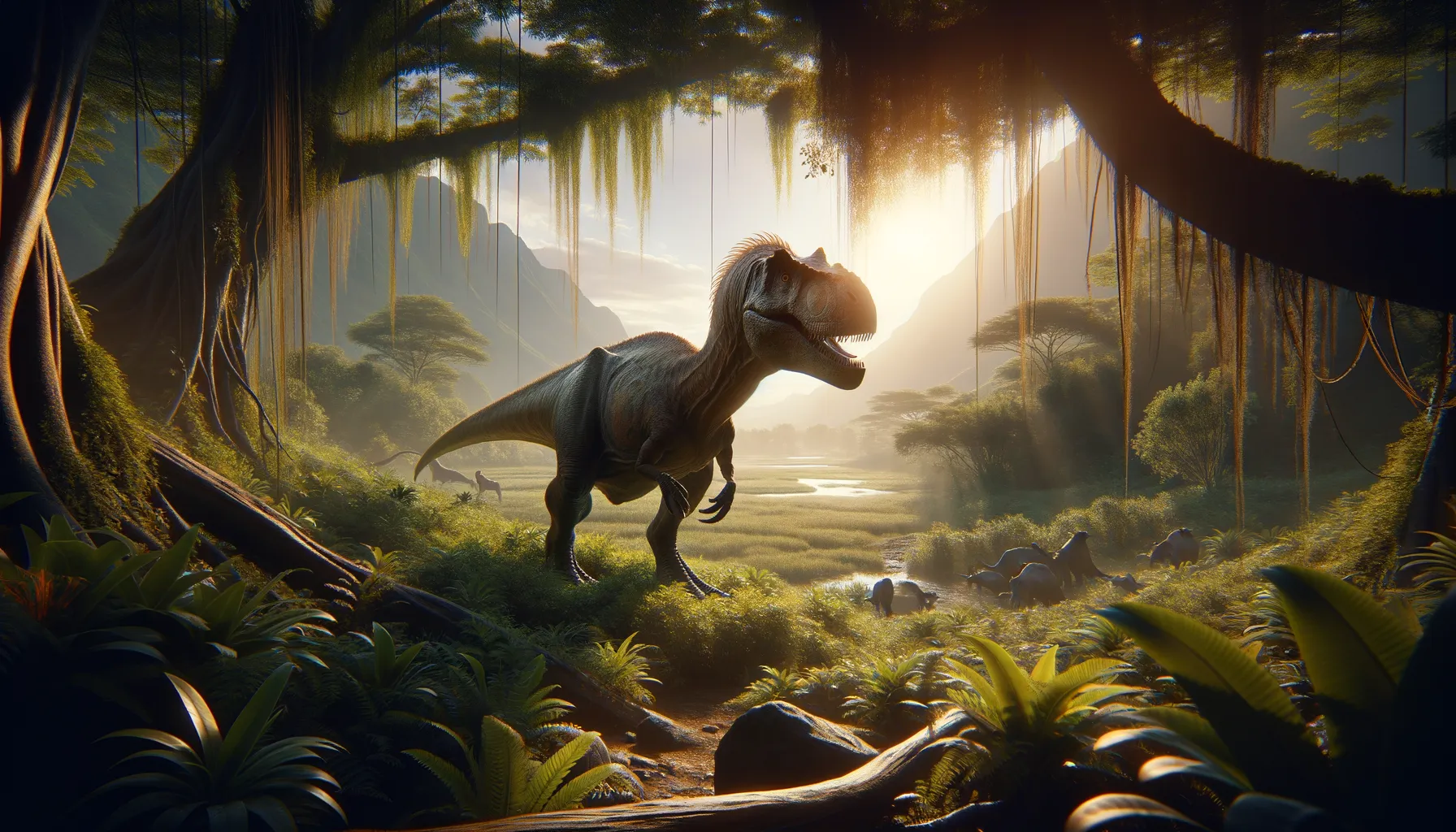
Laosaurus
Swift herbivore of the Jurassic world.
Period
Jurassic
Length
Approximately 2 to 3 meters long.
Height
About 1 meter tall at the hips.
Weight
Estimated to weigh up to 20 kg.
Laosaurus was a small, nimble herbivorous dinosaur that lived during the Late Jurassic period. Its remains were first discovered in North America, and it was primarily recognized for its speed and agility, which likely helped it evade predators. The Laosaurus belonged to a group of dinosaurs that thrived in lush environments with an abundance of vegetation. While much about its life remains shrouded in mystery, its discovery has helped paleontologists piece together the diverse ecosystems of the Jurassic era.
Diet
Laosaurus was a herbivore, feeding on a range of plant materials available in its environment. Its diet likely consisted of ferns, cycads, and other low-lying vegetation.
Hunting
Being a herbivore, Laosaurus did not hunt for prey. Instead, they foraged for plant material, relying on their keen senses to locate food.
Environmental challenges
Laosaurus faced challenges such as predation from larger carnivores in its habitat. To survive, it relied on its speed and agility to quickly flee from predators. Additionally, changes in climate and vegetation cover posed challenges to its living conditions.
Speed
Likely quick due to its small size and agile build.
Lifespan
Estimated to be around 10 to 20 years.
First discovery
Described by Othniel Charles Marsh in 1878.
Fun Facts
- Laosaurus was a small, plant-eating dinosaur that lived during the Late Jurassic period, around 150 million years ago.
- The name 'Laosaurus' means 'stone lizard', reflecting its fossilized state when discovered.
- Unlike some larger dinosaurs, Laosaurus likely moved quickly on two legs, making it an agile herbivore able to escape predators.
- Fossils of Laosaurus were first discovered in the Morrison Formation of North America, a region rich in dinosaur history.
- This dinosaur belonged to a group called ornithopods, which also includes well-known species like Iguanodon and hadrosaurs.
- Even though Laosaurus wasn't a giant, its discovery has helped scientists understand more about the diversity of small dinosaurs during the Jurassic period.
- Despite being named over a century ago, Laosaurus is still a bit of a mystery, as it's known from only a few fossil fragments.
Growth and Development
Laosaurus likely grew at a moderate pace, with juveniles rapidly developing the agility necessary for survival. This development was crucial for avoiding predators and competing for resources in its habitat. It reached maturity relatively quickly to ensure survival.
Habitat
Laosaurus inhabited lush, forested environments with ample vegetation. These habitats provided plenty of food resources and cover from predators. The climatic conditions of its time were warm and supportive of diverse plant and animal life.
Interaction with other species
Laosaurus likely interacted with other herbivorous dinosaurs while foraging. It needed to navigate social dynamics with other species, possibly competing for food. Predatory dinosaurs posed a constant threat, influencing its behavior and habitat choice.
Natural lifespan
Its natural lifespan was likely around 10 to 20 years under favorable conditions.
Reproduction
Laosaurus is believed to have laid eggs, as was common with many dinosaur species. Its reproductive cycle would have involved nesting and possibly caring for young hatchlings.
Social behaviour
Little is known about its social behavior, but it may have moved in small groups. Group living could have provided benefits such as protection from predators and cooperative foraging.
Fossil locations
Fossils of Laosaurus have been primarily found in North America. Their discovery sites help researchers understand the geographical distribution of dinosaur species in the Jurassic. These locations are critical for piecing together the historical biodiversity of the region.
